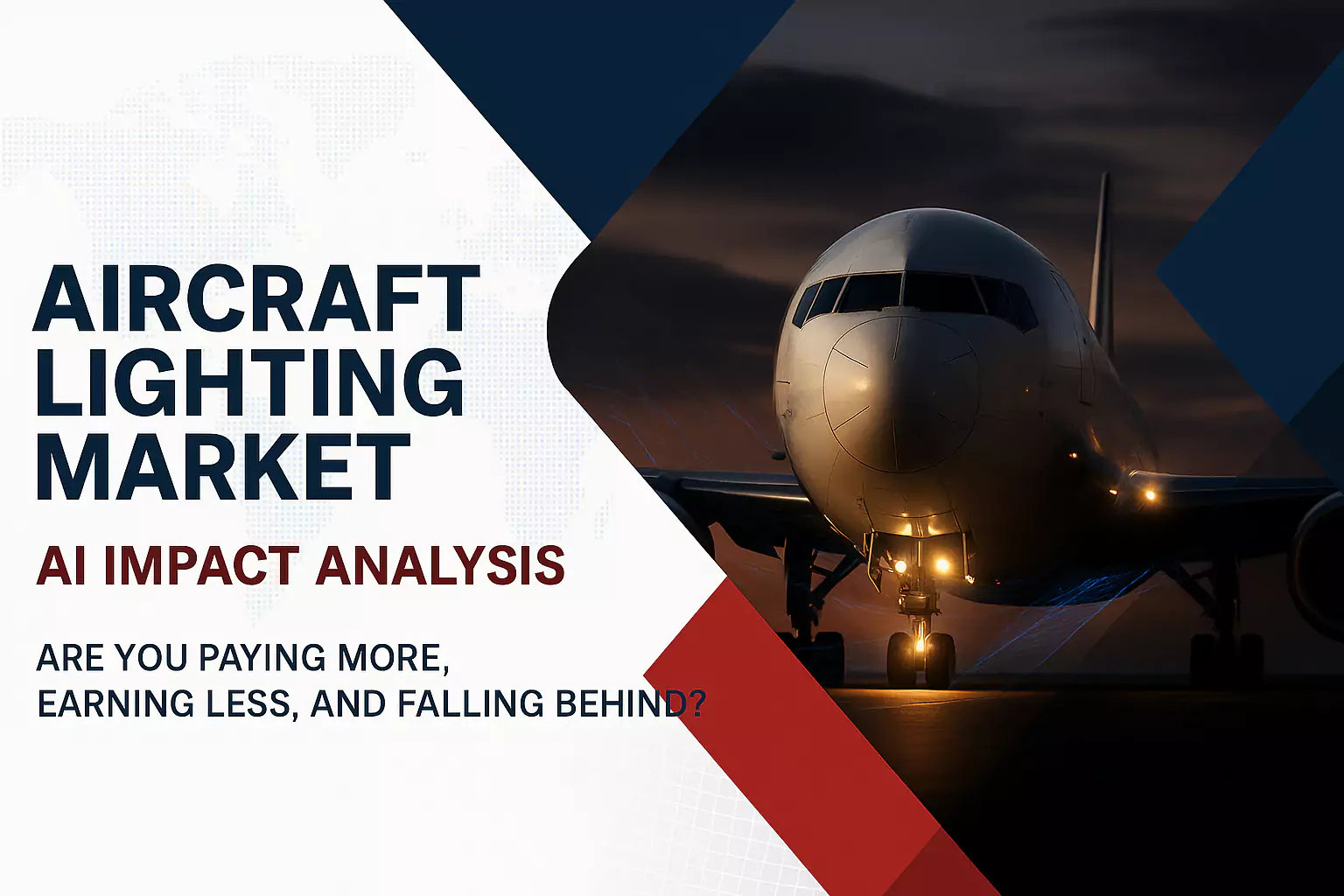AI Impact Analysis on Aircraft Lighting Industry
AI in the Aircraft Lighting Industry
The aviation sector is undergoing a digital transformation driven by artificial intelligence, reshaping how aircraft systems operate, especially in the area of lighting technology. Smart lighting systems are no longer limited to basic functionality but now serve a multi-layered role that enhances safety, reduces operational costs, improves efficiency, and provides superior passenger experiences. Artificial intelligence is at the core of this evolution, enabling lighting systems to become smarter, predictive, and adaptive to changing conditions both inside and outside the aircraft.
Technological Advancements Driven by AI
Artificial intelligence has ushered in a new wave of technological upgrades in aircraft lighting systems. These systems are now equipped with smart sensors and predictive algorithms that automatically adjust lighting based on environmental data, passenger needs, and aircraft conditions. AI enables advanced functionalities such as mood-based cabin lighting, automated emergency lighting activation, and adaptive exterior lighting to optimize visibility and minimize power consumption during different phases of flight. Through machine learning, systems are trained to enhance operational performance, minimize wear and tear, and provide self-diagnosing and reporting capabilities.

Impact on Safety and Operational Efficiency
Safety remains the cornerstone of aviation operations. AI-integrated lighting systems contribute significantly to this by ensuring optimal visibility during landing, takeoff, and in adverse weather conditions. Interior lighting systems adapt automatically in emergencies, improving evacuation speed and minimizing panic. AI-driven diagnostics enable proactive maintenance, reducing risks of in-flight lighting failures. This predictive capability lowers downtime, minimizes repair costs, and ensures operational efficiency, which is particularly critical for airlines managing large fleets and tight schedules.
Passenger Experience and Cabin Customization
Modern travelers demand comfort, convenience, and personalization. AI allows aircraft lighting systems to deliver this by dynamically adjusting lighting based on flight phases, time of day, and passenger preferences. Smart cabin lighting can simulate natural daylight to minimize jet lag and promote restful sleep. Additionally, AI enables personalization of lighting at the individual seat level, adjusting color temperature and intensity to match reading, dining, or resting preferences. Cabin ambiance can be altered based on passenger demographics, creating mood-enhancing environments that redefine the in-flight experience.
Energy Efficiency and Environmental Benefits
Energy efficiency is a key priority for sustainable aviation. AI enables lighting systems to operate at optimized energy levels without compromising performance. Intelligent control systems automatically dim or brighten lights based on external conditions and operational requirements, reducing overall power consumption. This not only leads to significant cost savings but also contributes to lowering the carbon footprint of airlines. AI-assisted lighting management complements eco-friendly practices by extending the lifespan of lighting components, reducing material waste, and minimizing the environmental impact of frequent replacements.
Get AI Impact Analysis on Aircraft Lighting Industry, Request Pdf Brochure: https://www.marketsandmarkets.com/pdfdownloadNew.asp?id=1092
Data-Driven Predictive Maintenance
Predictive maintenance powered by AI analytics is transforming how lighting systems are monitored and serviced. Sensors integrated within lighting units constantly gather data on usage patterns, electrical loads, and component health. AI algorithms analyze this data in real-time, predicting potential failures and scheduling maintenance before issues escalate. This predictive capability minimizes unscheduled repairs, reduces spare parts inventory costs, and enhances fleet reliability. Maintenance teams benefit from data-driven decision-making, optimizing operational uptime and resource allocation.
Integration with Smart Cockpit Systems
AI's influence extends beyond cabin and exterior lighting to smart cockpit systems. Adaptive lighting within cockpits improves pilot visibility, reduces eye strain, and enhances situational awareness by adjusting brightness and color temperatures in response to changing flight conditions. AI algorithms interpret instrument data, weather inputs, and pilot behavior to manage lighting ergonomics optimally. This integration improves overall flight safety and comfort while ensuring that pilots remain alert and effective throughout the flight.
Market Trends and Regional Dynamics
The aircraft lighting industry is witnessing rapid market growth, driven by increasing aircraft deliveries, rising demand for luxury air travel, and advancements in LED and OLED technologies. AI integration is becoming a key differentiator for lighting manufacturers and airlines seeking to enhance their operational edge. North America and Europe are leading the adoption of AI-enhanced lighting systems, while Asia-Pacific is emerging as a high-growth market fueled by expanding fleets and infrastructural investments in aviation. As regional markets evolve, customized AI-driven solutions are being tailored to meet specific airline preferences, passenger demographics, and regulatory standards.
Challenges and Regulatory Implications
Despite its many benefits, integrating AI into aircraft lighting systems presents regulatory, technical, and operational challenges. Certification of AI-driven components requires adherence to stringent aviation safety regulations and interoperability standards. Manufacturers must ensure system reliability and fail-safe operation under all conditions. Data privacy and cybersecurity risks associated with AI-based systems need comprehensive management strategies. Airlines face challenges in retrofitting older aircraft with smart lighting systems and training personnel for AI-enabled maintenance and operations.
Future Outlook and Strategic Opportunities
The future of AI in the aircraft lighting industry holds immense promise. Advancements in edge computing, IoT integration, and AI-driven energy management will drive further innovations in smart lighting. Emerging trends such as biometric-based lighting customization, AI-assisted mood lighting, and autonomous maintenance drones inspecting and replacing lighting components will redefine industry standards. Strategic partnerships between lighting system manufacturers, AI technology providers, and airlines will accelerate innovation cycles and improve operational value. AI will also play a pivotal role in developing sustainable lighting solutions that align with the aviation industry's environmental goals.
Related Reports:
Aircraft Lighting Market by Technology (LED, HID, Halogen, NVIS), Light Type (Interior (Signage, Reading, Ceiling & Wall lights), Exterior (Emergency, Anti-collision, Search Lights), Cockpit), End User, Aircraft Type, Region - Global Forecast to 2029
This FREE sample includes market data points, ranging from trend analyses to market estimates & forecasts. See for yourself.
SEND ME A FREE SAMPLE





